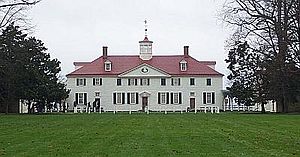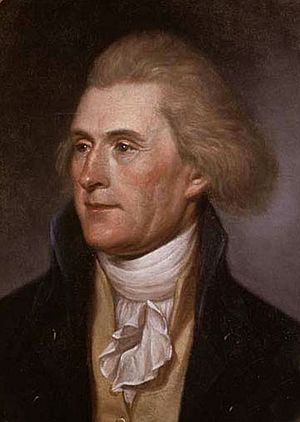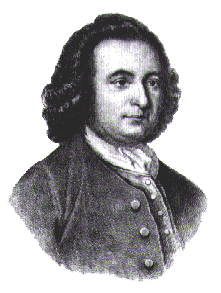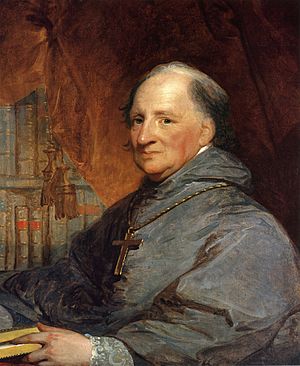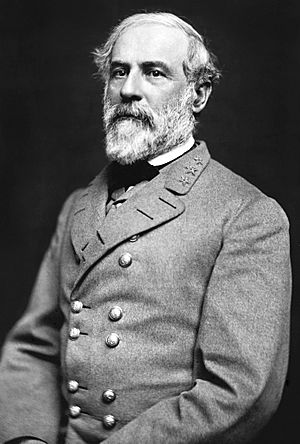American gentry facts for kids
The American gentry were wealthy landowners in the southern American colonies. They were part of the American upper class before the United States became a country. These families often owned large farms called plantations.
Historians use the term "gentry" to describe these rich landowners in the South before 1776. These families often rented out parts of their land to other farmers. In the northern colonies, there were not many large estates like these, except for some Dutch areas in New York's Hudson Valley.
Many important figures in American history came from gentry families. For example, George Washington and Thomas Jefferson were part of this group.
Life as a Gentry Landowner
Gentry families lived a very comfortable life. They often imported fancy goods from England, like furniture and clothing. They paid for these items by selling their crops, especially tobacco.
George Washington was a successful farmer who loved trying new ways to grow crops. He was happy to leave his public jobs to manage his plantation at Mount Vernon. The gentry also enjoyed activities like Fox hunting, which was popular among wealthy people worldwide.
However, being a gentry landowner wasn't always easy. Spending a lot of money and the changing prices of tobacco meant that many families faced money problems. For instance, Thomas Jefferson was deeply in debt when he died. His family had to sell his home, Monticello, to pay off what he owed.
Some gentry families, especially in the Dutch areas of Upstate New York, rented out their lands to others. But in general, most ordinary farmers in the South owned their own land.
Famous Gentry Families
Many of the earliest and most important families in Virginia were part of the gentry. These are often called the First Families of Virginia. They settled in Virginia during the 1600s, especially around Jamestown and the James River. Because they often married within their own social group for many years, certain family names became very common in the colony.

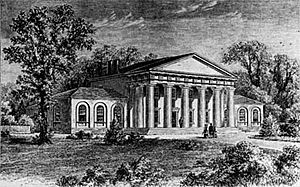
Many of these early settlers came from England during the English Civil War (1642–1660). They were often supporters of the King, known as "Cavaliers," who left England when Oliver Cromwell and Parliament took power. Because many Virginia families supported King Charles II, he supposedly called Virginia his "Old Dominion," a nickname still used today.
Many of these early Virginia settlers were "second sons." In England, the oldest son usually inherited all the land and titles. So, younger sons often came to Virginia to start their own lives and gain land. They became a key part of the wealthy class in Colonial America.
Families like the Lees and Fitzhughs traced their roots back to noble families in England. However, some gentry families started from more humble beginnings. For example, the Gilliams arrived in Virginia in the 1600s as indentured servants (people who worked for a period to pay for their travel). By the late 1700s, they owned several large plantations and became part of the gentry.
Maryland's Colonial Families
The leading families in the Province of Maryland were also part of the gentry. Some of these families also owned land in Virginia. Maryland was originally created as a safe place for Catholic settlers. However, the Anglican Church (Church of England) eventually became more powerful there, partly due to influence from neighboring Virginia.
The Carroll family is an example of a powerful political family from Maryland. They were of Irish descent. Another important family was the Mason family of Virginia, whose ancestor, George Mason I, was a member of the English Parliament.
See Also
|


